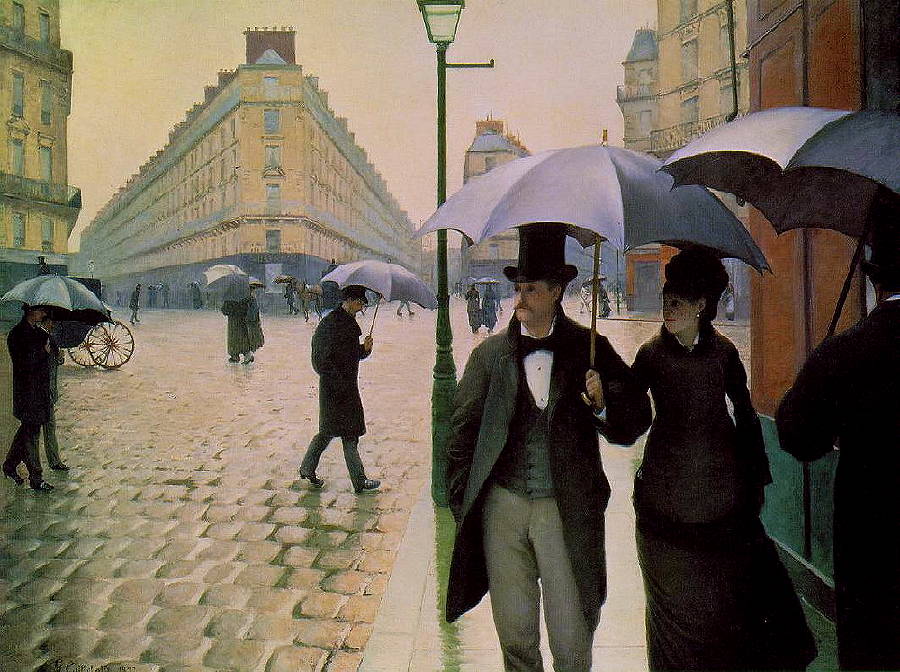
Gustave Caillebotte (1848-1894)
Rue de Paris, temps de pluie; Intersection de la Rue de Turin et de la Rue de Moscou. 1877
Paris: A Rainy Day depicts an area of the Batignolles quarter.
Oil on canvas, 212.2 x 276.2 cm (83 1/2 x 108 3/4"); The Art Institute of Chicago
Caillebotte: WebMuseum | Commentary (*) | WikiP | Complete Collection |
(look for elements and traits that repeatedly appear)
Color range is limited to low-chroma, understated colors.
Hues are basically a blue-green, a violet, and a yellow.. a roughly triadic hue scheme.
Shapes are mostly rather geometric, blocky shapes -- the pavement is broken into converging square (well, trapezoids) while the roof lines have a jagged sort of stair-step quality.
The people tend to be tall, dark rectangle groups.. most similarly proportioned to the front face of the pyramid-shaped building in the top left-center.
The arcs of the umbrellas create another rhythm throughout the composition -- these tend to be the boldest shapes with the sharpest contrasts of value and of edge sharpness.
(look for alignments, structures or groupings that organize parts into larger entities (gestalt))
The composition is divided from left-to-right by the light pole -- the left and right sides are handled quite differently.
The top and bottom is divided by the horizon line -- actually the based of the buildings. Again, the top and bottom halves are quite different in pattern, tone and color.
(look for contrast of any and every kind. Look especially for similar forms that are varied in some way. Look for anomalies — patterns or norms that are broken.)
Describe the forms that contribute to their graphic emphasis?
. The primary focal area is certainly the couple on the rigtht, and, more particularly, the gentleman's chest and head.